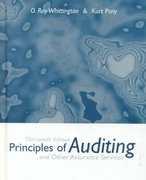Houseco, an audit client of Jones, CPA, for the past five years, is a manufacturer of various
Question:
Much of the increased sales performance is due to Donald Skaldon, who became the chief executive officer in 20X4. Donald and several other officers were able to accomplish a leveraged stock buyout in 20X6. This seems to have worked out very well since Donald suggests that his net worth grew from less than $300,000 to well over $5 million due to increases in the value of the common stock he holds in the company. He is also excited since the company€™s unaudited results show earnings per share of $1.21, one cent more than the most optimistic analysts had projected. He points out to Jones that sales are up over 38 percent compared to the previous year and net income has increased by 54 percent. All is well.
Jones is beginning the risk assessment analytical procedures for the 20X8 audit to obtain information to help plan the nature, timing, and extent of other audit procedures. More specifically, he wants to identify areas that may represent specific risks relevant to this year€™s audit.
.png)
Required:
Use the balance sheet on page 179 and the income statement on page 180 to identify accounts that may represent specific risks relevant to this year€™s audit. For each area, briefly note why you think it represents arisk.
Common stock is an equity component that represents the worth of stock owned by the shareholders of the company. The common stock represents the par value of the shares outstanding at a balance sheet date. Public companies can trade their stocks on...
Fantastic news! We've Found the answer you've been seeking!
Step by Step Answer:
Related Book For 

Principles Of Auditing And Other Assurance Services
ISBN: 9780072327267
13th Edition
Authors: Ray Whittington, Kurt Pany
Question Posted:





